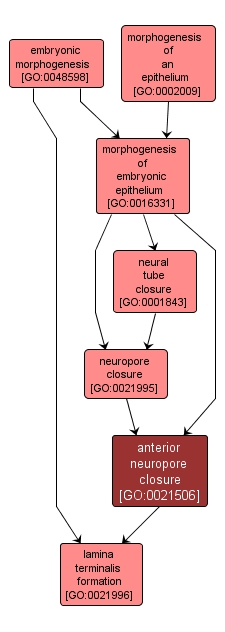GO TERM SUMMARY
|
| Name: |
anterior neuropore closure |
| Acc: |
GO:0021506 |
| Aspect: |
Biological Process |
| Desc: |
The joining together of the neural folds of the rostral opening of the neural tube. The anterior neuropore appears before the process of neural tube closure is complete. |
|

|
INTERACTIVE GO GRAPH
|














